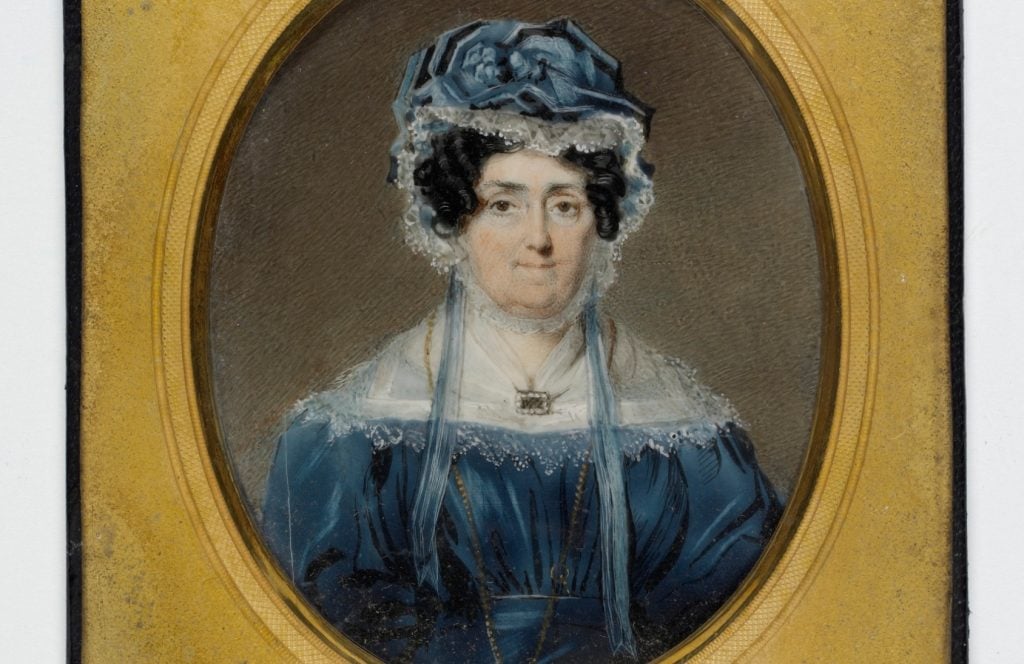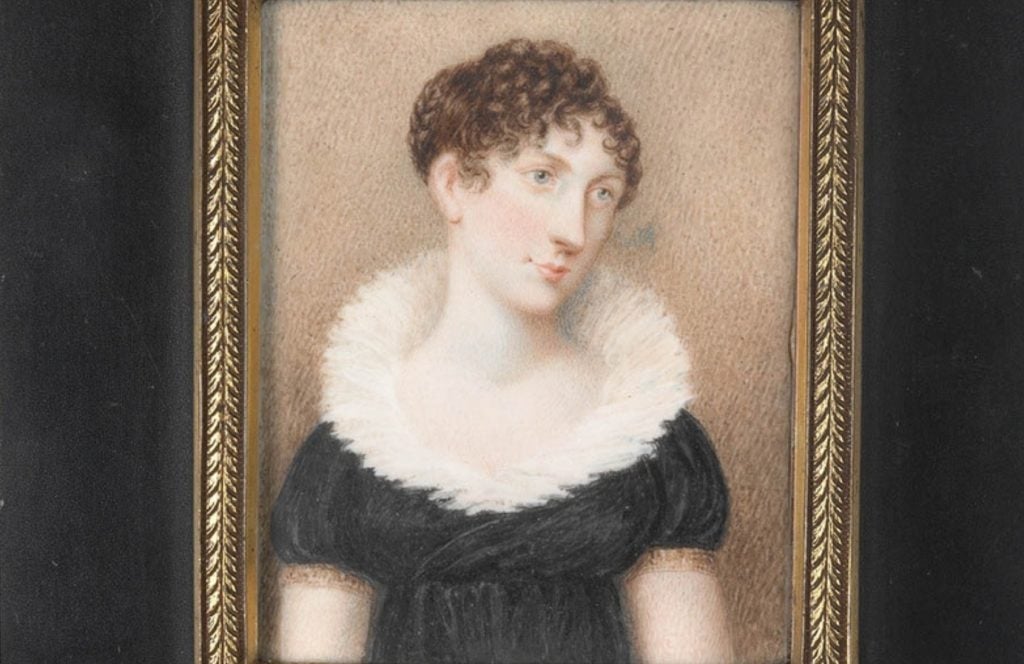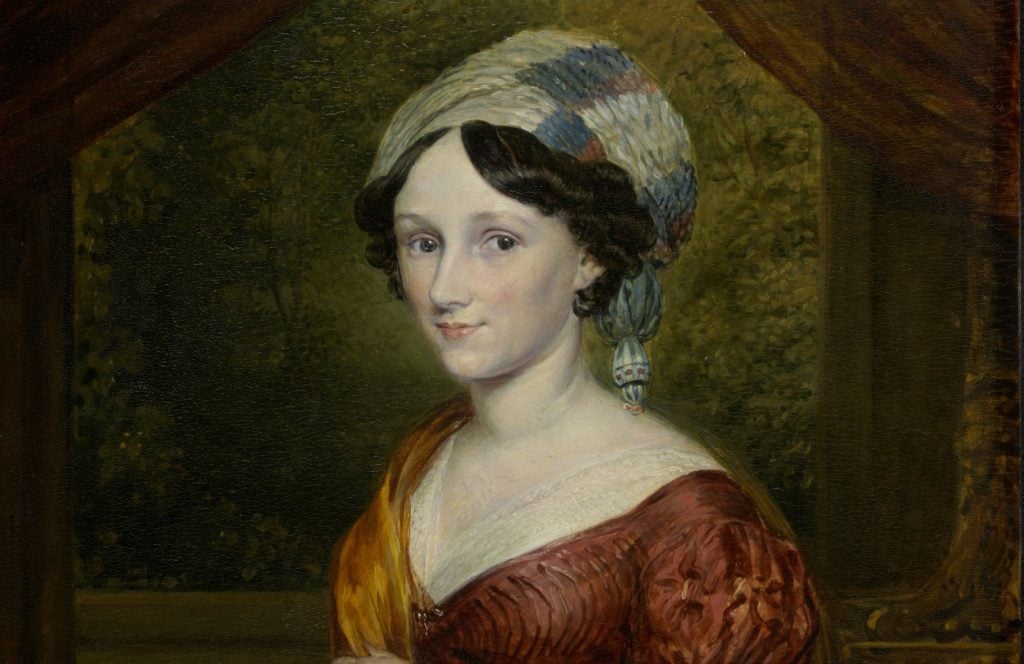From adversity to achievement – discover the fascinating stories of three of NSW's first vice-regal women.
Adorning the walls of Old Government House are a series of newly hung portraits. The subjects of these works are the women who once called this storied building home – the vice-regal consorts of the first governors of NSW.
While the existences of the men who originally resided here are extensively recorded in the pages of history, the lives of the women of Old Government House were often overlooked and rarely captured in detail, making their accounts much harder to trace. Yet their stories are equally compelling.
From arduous journeys to Australia to navigating life in the years of early settlement, the wives and daughters of the first governors of NSW may have been privileged, but there were constant obstacles to overcome.
Linked by position and connected through determination and resilience, we look at the lives of three of Australia’s first vice-regal women. Learning how to effectively wield influence, launching charitable institutions, overseeing public works and shaping the society of the colony, their actions may not have received the official acclaim that their husbands did, however their many accomplishments had lasting impact.

Anna Josepha King (1765 – 1844)
Born in Devonshire, England, Anna Josepha King, née Coombe, was the first governor’s wife to arrive in the colony. Renowned for her charitable work and influence over her husband she earnt the popular nickname ‘Queen Josepha’.
In 1791, only four days after marrying her first cousin Philip Gidley King, she set sail for Norfolk Island where her new husband had been assigned the post of Commandant and Lieutenant Governor. Six weeks after she arrived at the remote convict settlement, she gave birth to her first child, a boy called Philip Parker. Her son was followed by two daughters, Anna Maria and Utricia (who sadly died at a young age). During her time on Norfolk Island, she also acted as stepmother to her husband’s two illegitimate sons with his former housekeeper, convict Ann Inett. Her willingness to do so offers insight into her nature and the complex web of relationships that characterised colonial Australia.
In 1796 her husband’s ill health forced the family’s return to England and on the journey home Anna Josepha gave birth to a fourth child, a daughter named Elizabeth. Four years later the Kings returned to Sydney for Philip to take up his appointment as the third Governor of NSW. While their youngest daughter travelled with them, the two elder children remained in England to be educated, a parting Anna Josepha found extremely difficult, as documented in her lively journal detailing the tumultuous five-month ocean voyage in 1800.
In Sydney Anna Josepha used the influence her position bestowed on her to effect positive change. Steadfastly committed to philanthropy, she was a leading member of the six-person committee that established the Female Orphan School. Her dedication to the school, the first welfare institution in NSW most commonly known as Mrs King’s Orphanage, set the standard for the social work of vice-regal women. Alongside her official duties, she remained devoted to her role as mother. Five years after her arrival in Sydney Anna Josepha gave birth to her last child, a girl called Mary, who was born at Government House in Sydney in 1805.
In 1807 the Kings returned to England due to a deterioration in the health of the Governor, who died at the age of 50 the following year. Anna Josepha resided in England for more than 24 years until Australia beckoned yet again. With three of her adult children now settled in NSW she desired to return to the place where she had spent her most formative years. In 1832 she set sail for Sydney and lived with her eldest daughter Anna Maria and her husband Hannibal Macarthur at their home, The Vineyard, in Parramatta for the rest of her life.

Elizabeth Henrietta Macquarie (1779 – 1835)
The youngest daughter of John Campbell, 5th of Airds and Jane Campbell, of Stonefield, Elizabeth Henrietta Campbell was 29 when she married Lachlan Macquarie, a distant cousin and a widower 17 years her senior. Meeting at Lochbuie House on the Isle of Mull off the west coast of Scotland, the pair became engaged in 1805, before marrying two years later in Devon, England. Although a somewhat unusual match on paper, Elizabeth and Lachlan enjoyed a loyal and affectionate relationship.
Prior to marriage Elizabeth lived a practical but privileged life as a governess, but this comfortable existence changed when she experienced great personal loss. In 1808 her first child Jane died at only three-months-old. She suffered at least seven miscarriages in the six years following, before giving birth to a long-awaited second child, a boy named Lachlan in 1814. Although she faced misfortune, Elizabeth is remembered as both vivacious and intrepid, traits which can also be seen in both her diary and numerous surviving letters.
In 1809 Lachlan Macquarie was appointed the fifth Governor of NSW. Elizabeth and her husband arrived in Sydney onboard the Dromedary on the last day of the same year. With a keen interest in architecture, landscaping and agriculture, Elizabeth took an active role in the colony and is credited with many of the major works that her husband implemented. This included the extensions of Government House, Parramatta which were designed by Elizabeth, and the house became their primary residence.
Elizabeth’s design legacy is also visible in other buildings and public spaces in Sydney, but it is Mrs Macquarie’s Chair – a sandstone rock, situated on a picturesque harbour cove, which the Govenor had cut into a bench for her – that she is most associated with. She also used her influence for philanthropic purposes, focusing her efforts on the welfare of female convicts and First Nations People.
Despite suffering from periods of ill health while in Sydney, Elizabeth managed to accompany her husband on all his major journeys around Australia including Tasmania in 1811 and across the newly explored Blue Mountains to Bathurst in 1815. Her extensive travels symbolic of her dauntless spirit.
After Lachlan resigned his post in 1821, the Macquarie family sailed back to England in 1822, spending time travelling through Europe before returning home to their family estate in Scotland. Lachlan died in London while on business in the city in 1824. Having been bequeathed a small house in London by her life-long friend Miss Henrietta Meredith, Elizabeth resided in England before returning to Scotland in 1830, dying on the Isle of Mull at the age of 56.

Eliza Darling (1798 – 1868)
While her husband’s time as Governor of NSW was marred by controversy, Eliza Darling was a highly popular vice-regal consort with accomplishments that crossed from philanthropy to house design.
Born Eliza Dumaresq in Staffordshire, England in 1798, she married Sir Ralph Darling in 1817. In 1824 her husband was appointed Governor of NSW and the family left for Sydney with their three children (one an infant born only shortly before their departure). Arriving in Australia in December 1825, the Darlings initially set up home at Government House, Parramatta while repairs were completed on the Sydney residence. Although Eliza lived mainly in Sydney, their country residence was in frequent use on weekends and as a winter retreat.
Known as a devoted mother, she had ten children, however only four girls and three boys survived to adulthood, another three children sadly died in infancy. Despite her busy family life (she was pregnant every year during her time in Australia), Eliza was committed to philanthropy and in 1826 she founded the Sydney Female School of Industry. Located on Macquarie Street, it was the first charity in NSW that was founded and run entirely by women. She visited the school almost daily and was the patroness and a committee member, along with other prominent women of colonial society. Eliza also founded the Female Friendly Society and worked with numerous other charities dedicated to women and children.
Alongside her philanthropic activities she was an accomplished artist, with numerous skilled watercolour paintings of landscapes and native botany attributed to her. Like Elizabeth Macquarie she also had an avid interest in architecture. In 1827 she entered and won Australia’s first house design competition which was held by her husband to obtain a new design for Government house. Even considering the obviously favourable circumstances of her connections, it was an extraordinary result for an amateur architect.
Eliza’s significant skills as a hostess, (the Darlings entertained frequently, hosting dinners twice a week) helped to gloss over the unpopularity of her husband’s militant administration. Ralph Darling’s term as Governor of NSW expired in 1831 and the Darlings left Sydney to return to England. Eliza remained in her home country until the end of her life in 1868.
Discover more trailblazing women
Hear from pioneering women in their own words as they recount their remarkable lives in interviews from the National Trust oral history project.

 Twitter
Twitter Facebook
Facebook Linkedin
Linkedin Email
Email